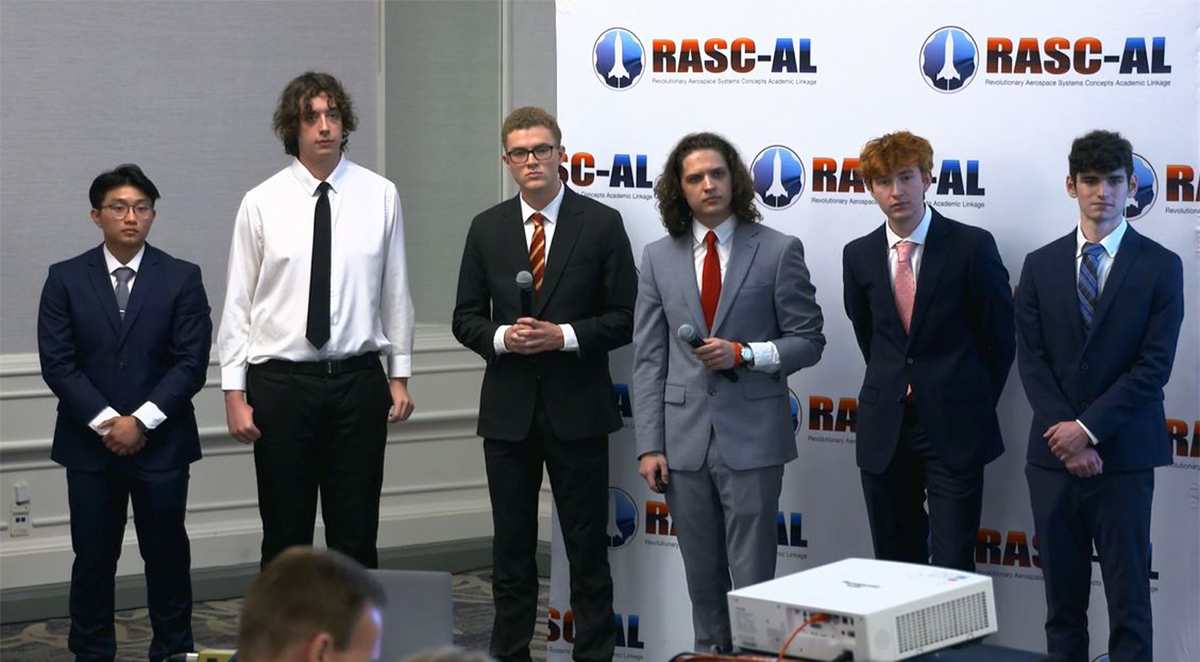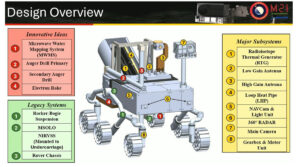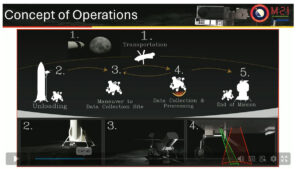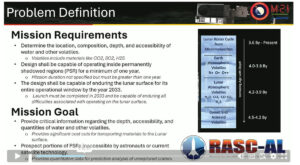Make to Innovate student team is first-time finalist in NASA’s RASC-AL competition
Author: aere_marisc
Author: aere_marisc

The Make To Innovate (M:2:I) program’s RASC-AL student team was selected as a finalist for the first time in the recent NASA-organized national collegiate competition. A team of 13 undergraduate students from Iowa State University presented their design concept to a panel of NASA judges. RASC-AL (Revolutionary Aerospace Systems Concepts – Academic Linkage) invites teams to develop new and innovative concepts to improve the success rates for future NASA operations on the moon, Mars, and beyond.

Iowa State’s team was one of 14 invited to take part in this year’s event. RASC-AL is in its 23rd year, and is one of NASA’s longest-running student competitions. This year’s version invited teams to pursue research in one of four themes pertaining to expanding the ability of humans to thrive in a lunar environment. The ISU team participated in the category of “Large Scale Lunar Crater Prospector,” which involved designing prospective vehicles that would traverse the surface of the moon to perform different functions in long-term established NASA Artemis program research sites on the moon.

Aerospace engineering senior Ethan Harrigan served as the project manager for the team and says, “Being a first-year team in the competition meant we had a lot of learning about the process of developing a solution before we could even consider designing one.”
The M:2:I group’s project proposal is called “SCARCE,” which stands for “Sub-Surface Condensation Analysis Rover for Crater Exploration.” Its purpose is to address challenges in navigating an area of the moon’s surface to robotically obtain critical information on the location, composition, depth and accessibility of water, ice, and other volatiles – unpredictable elements the rover may face on the mission – such as carbon dioxide, sulfur dioxide, and hydrogen sulfide. This is done via mechanical processes to avoid hazards such as human exposure to radiation, or to access materials that are not accessible by human crews.

SCARCE employs tools such as a microwave water-mapping system, an autonomous navigation and data interpolation system, spectrometers and an auger drill. The design calls for a component called an electron rake, which would use electrical charge technology to help dissipate the hazards of the dusty and debris-filled lunar surface. Repurposing of major system components is designed into the system, which is projected to save as much as $200M in expenses.
Harrigan explains how the electron rake minimizes damage on the rover: “Due to the moon having no magnetosphere, a large negative charge builds up which can cause large static shocks on the rover. These shocks have been known to disable key components rovers. This design is made up of many long, thin aluminum sheets which collect charge from the moon surface in contact with it.” This, in turn, reduces the shock threat. Harrigan also stated that due to the same static, materials from the lunar surface also stick on components of a rover. The rake also serves the purpose of blocking these materials from sticking to vital power components.
Teams were required to submit a two-minute video and detailed written proposal to be considered. View the Iowa State team’s live presentation to NASA in this video, beginning at 1:35:20.
Matthew Nelson, director of the M:2:I program, says, “We’ve sent in paperwork and proposals for RASC-AL teams more than once in the past, but this is the first time we’ve actually been accepted into the competition. It’s a pretty prestigious competition, so the fact that we even got into it is an accomplishment.” Harrigan agrees: “The group I worked with in both semesters this year put their heart into this design, and the fact we were selected as a finalist is a testament to that.”
Nelson says he feels RASC-AL is reflective of the M:2:I program in general. “There are lots of things in M:2:I’s future,” Nelson said. “The hands-on learning that we have is definitely a priority for the department, and these activities really do have an impact on these students.” Harrigan comments, “This team was made up mostly of sophomores. The experience they developed working on this are not the ones you are taught in classroom, but are learned through real-world engineering.”
M:2:I is open to all undergraduate students at Iowa State University. The popular program is designed to jump-start students’ understanding of engineering fundamentals through hands-on experiences. Students address real-world problems in various forms of industry via collaborative coursework with a focus on creativity and design optimization on equipment in the field. Students adopt transferable skills that are essential in future careers.